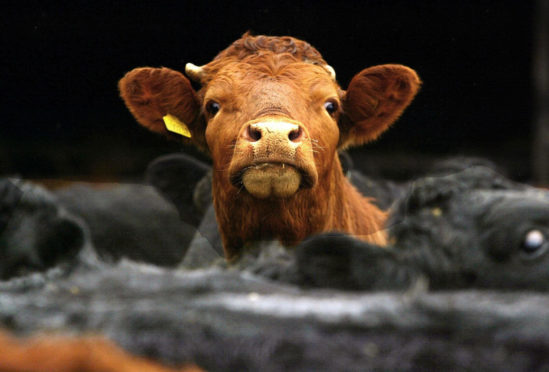A case of Bovine Spongiform Encephalopathy (BSE) has been confirmed on an Aberdeenshire farm for the first time in 10 years.
So, what is BSE?
BSE stands for Bovine Spongiform Encephalopathy – a disease which infects cows, attacks their central nervous system and is generally fatal. Symptoms typically include a lack of co-ordination and aggression, leading it to be known as mad cow disease.
Can it be passed to humans?
Scientists believe the disease can be passed to humans through the food chain, causing a fatal condition called new variant Creutzfeldt-Jakob disease (nvCJD).
When was the last case in Scotland?
This case the Scottish Government has confirmed on an Aberdeenshire farm is the first in Scotland for more than a decade.
When was the last UK outbreak?
A widespread BSE outbreak which began in the UK in the late 1980s reached its peak in 1992/1993 with 100,000 confirmed cases. However there were two more recent cases in 2015.
Is food affected?
In the latest case, no. A ban on the use of high risk offal for human consumption was introduced in 1989, leading many to fear eating burgers. But the following year, then Agriculture Minister John Gummer claimed beef is “completely safe” and appeared on TV trying to get his four-year-old daughter to eat a beefburger.
When did the disease first appear in the UK?
The first confirmed case in Britain was 1986. The disease is notoriously hard to track as its incubation period can be anything from a few months to eight years.
Does a confirmed classical case of BSE affect Scotland’s negligible risk BSE status?
Yes, a confirmed case of classical BSE will alter Scotland’s BSE status to Controlled Risk. Scotland will now have the same status as England and Wales.
What is Scotland doing to monitor BSE?
An active BSE surveillance programme has been in place since 2001 and is carried out on all fallen livestock that die on farms over 48-months-old by approved facilities. Scotland takes BSE samples from over 20,000 fallen cattle each year.
Can humans get BSE?
A. An extremely rare form of spongiform encephalopathy called variant(v) Creutzfeld-Jakob Disease (CJD) occurs in humans and is likely to be caused by consuming meat from a cow that has been infected with BSE, a similar prion disease to vCJD.
Since the link between vCJD and BSE was discovered in 1996, strict controls have proved very effective in preventing meat from infected cattle entering the food chain.
What are signs of BSE in cattle?
Cattle affected by BSE experience progressive degeneration of the nervous system. Affected animals may display changes in temperament (nervousness or aggression), abnormal posture, incoordination and difficulty in rising, decreased milk production, or loss of condition without noticeable loss of appetite.
The causative agent of the disease is not completely characterised, and there is neither any treatment nor a vaccine to prevent the disease. The incubation period is from two to eight years. Following the onset of clinical signs, the animal’s condition deteriorates. This process usually takes from two weeks to six months. Any farmer with concerns should immediately seek veterinary advice.










